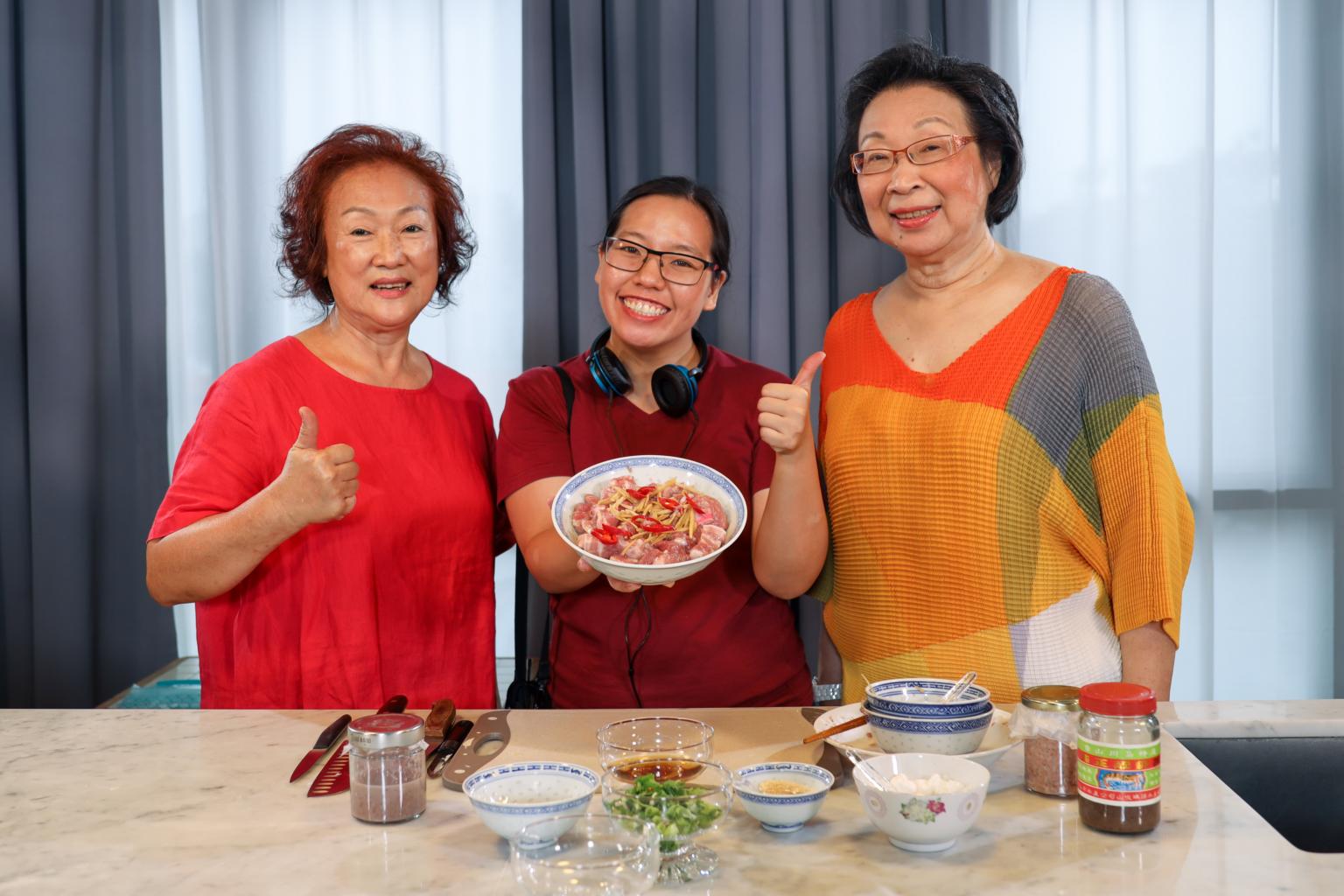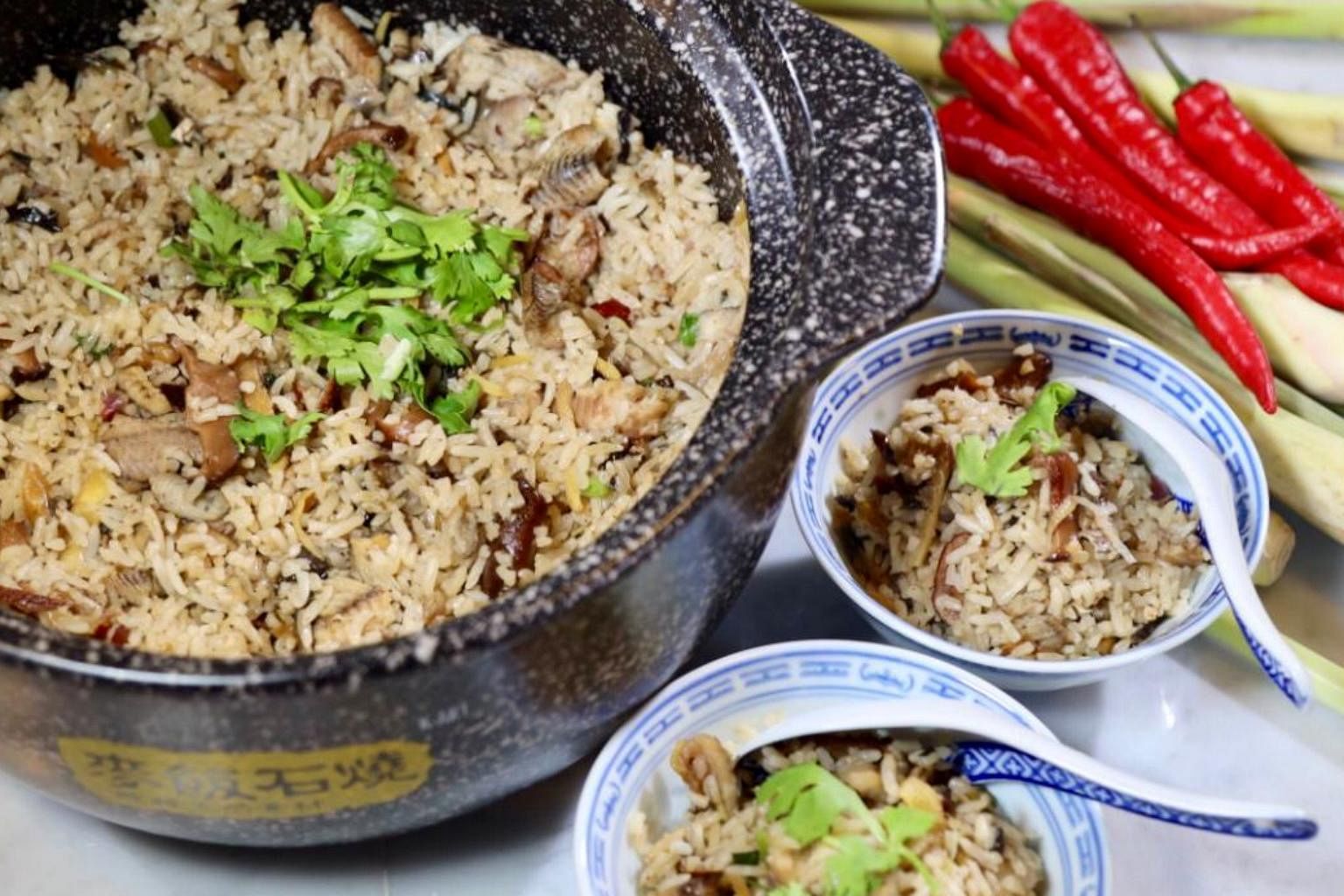Learn more about Toishanese food and culture in Singapore HeritageFest video
Sign up now: Get ST's newsletters delivered to your inbox

(From left) Madam Chin Lai Yin, heritage researcher Lynn Wong and Mrs Vivienne Tan with a Toishanese dish.
PHOTO: HO YEAH FESTIVAL
Follow topic:
SINGAPORE - It was on a trip to the Chinese city of Taishan in 2013 that Madam Chin Lai Yin learnt how to make claypot eel rice.
Born in Penang, the 70-year-old did not taste the dish, which is native to her parents' hometown, until much later in life.
Madam Chin, a Singaporean, now has a platform to share her passion for the relatively unknown Toishanese cuisine at the Singapore HeritageFest.
As part of this year's festival, cooking enthusiasts can learn how to prepare two Toishanese dishes, including the eel dish, through a video titled Our Roots And Foods.
It is one of multiple food-related programmes that are part of this year's Singapore HeritageFest, which celebrates Singapore's healthcare and food heritage.
The Toishanese are a group of people who trace their roots to Taishan, a city in China's Guangdong province. They were also among the earliest Chinese migrants who settled in Singapore, with many finding work in construction and carpentry. One Toishanese clan association - Ning Yeung Wui Kuan - is the oldest locality clan here, founded in 1822.
There are at least three Toishanese kinship and locality clans here, and their combined membership is in the thousands.
Among the prominent Toishanese to have landed in the region is businessman and philanthropist Wong Ah Fook, who ran a construction business and was one of the founders of Kwong Wai Shiu Hospital.
In the video, Madam Chin, who is semi-retired and considers herself a fourth-generation Toishanese, teaches another person of Toishanese heritage, Mrs Vivienne Tan, the late Mr Wong's great-granddaughter.
Madam Chin, a grandmother of seven, learnt to make claypot eel rice from a nephew, a chef in Taishan, on a visit to the city with her siblings to find out more about their heritage.
The raw eel is torn by hand and stir fried with ingredients like tangerine peel, red dates and shallots, while its bones are used to prepare a stock that the rice is cooked with.

The eel meat and rice are eventually combined and served in a claypot.
Meanwhile, shrimp stars in the second dish to be featured: steamed pork belly with salted shrimp paste.
The paste consists of just two ingredients - fresh unwashed shrimp and salt.
A continuous process of stirring and exposure to sun and air causes the mixture to ferment, creating a paste that is ready to consume after about a week.
The pork dish that Madam Chin prepares is also different from what one would find in Taishan, as her recipe includes chilli, reflecting the Peranakan influence from her Penang roots, and a dash of lime juice, which Madam Chin added to a recipe passed down from her mother to enhance the taste of the dish.

For heritage researcher Lynn Wong, who helped to produce the video, talking about food is the doorway to discovering more about different cultures.
"Food is just an entry point, because Singaporeans are foodies, but beyond that, we can understand more of the culture's richness," said Ms Wong.
Madam Chin said: "Without an appreciation of our roots, food will just be food. But with the roots, the dishes are something that is ours, that we identify with."


